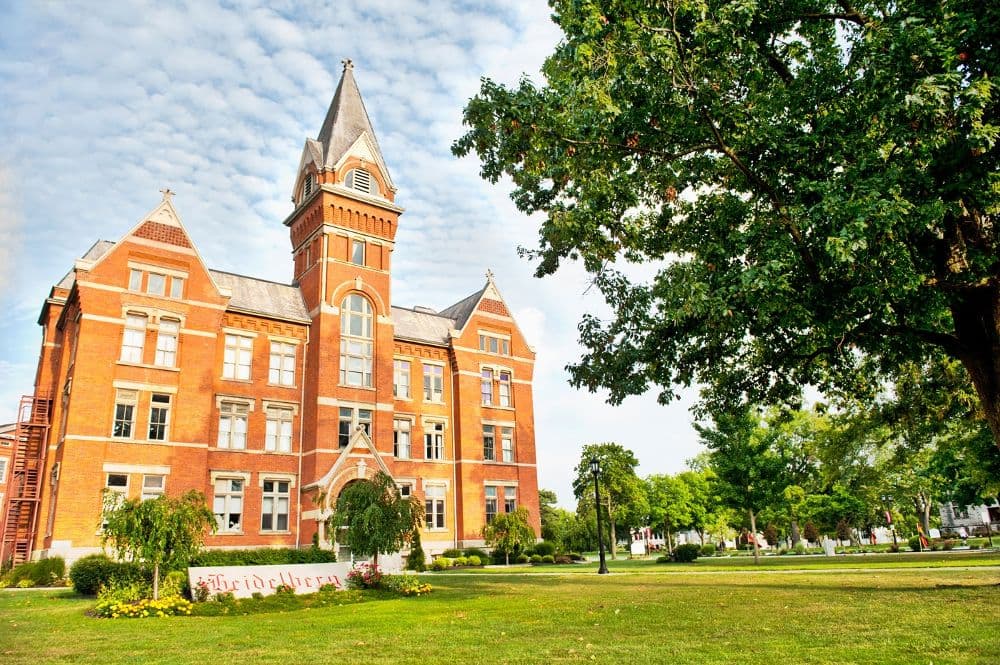Exploring the Rise of Liberal Arts and Science Universities in Europe: A Comprehensive Guide


Keith N.
Graduate of UC Berkeley & UC Santa Cruz
Summary
Liberal arts and science universities are reshaping higher education in Europe by offering a flexible, interdisciplinary alternative to traditional specialization-focused institutions. With benefits like affordability, cultural diversity, and strong career preparation through transferable skills, these schools highlight how this model equips students with critical thinking, adaptability, and international outlooks, making it an increasingly attractive option for today’s learners.
Liberal Arts and Science Universities: A New Trend in European Education
The growing appeal of liberal arts and science universities in Europe is reshaping the educational landscape and offering students a unique blend of comprehensive learning and critical thinking.
Unlike traditional universities, which often emphasize specialization and professional training from the outset, liberal arts and science institutions provide a more interdisciplinary and holistic approach to education. This allows students to explore a broad spectrum of academic disciplines before homing in on their specific areas of interest.
Liberal arts and science education, though well-established in the United States, is now gaining significant traction in Europe.
This approach encourages broader intellectual development, equipping students with versatile skills that are increasingly valuable in a rapidly changing global job market. By fostering critical thinking, problem-solving abilities, and a global perspective, liberal arts and science universities — beyond prepping graduates for a first job — equip their students with 21st-century skills that will be invaluable for navigating a lifetime of opportunities.
In this article, we delve into the distinctive features of liberal arts and science universities, highlighting the key differences between these institutions and traditional European universities. We also explore the numerous advantages offered by liberal arts and science curricula, showcasing why this educational model is becoming an attractive option for students across Europe.
What Are Liberal Arts and Science Universities?


Liberal arts and science universities offer an educational framework that emphasizes broad-based learning and the development of critical thinking skills.
A Multidisciplinary Emphasis
Unlike traditional universities that often require students to choose a specialized field of study early on, liberal arts and science institutions encourage exploration across a wide range of disciplines.
The multidisciplinary approach ensures that students gain a comprehensive education, touching on the humanities, social sciences, natural sciences, and mathematics, while also allowing a more open curriculum pathway for choosing and shaping your major.
Student-centered Learning
At these universities, the teaching style is often more interactive and student-centered. Classes are typically smaller, fostering a more intimate learning environment where students can engage in discussions, debates, and collaborative projects. Professors act as facilitators, guiding students to think critically, analyze complex problems, and communicate effectively.
A Global Perspective
Liberal arts and science universities also place a strong emphasis on personal development and global awareness.
Students are encouraged to develop a broad perspective and understanding of different cultures and global issues.
This holistic approach not only prepares students for a wide range of careers, but equips students to become global citizens, able to exercise the adaptability and resilience needed to thrive in an ever-changing world.
Overall, liberal arts and science universities offer a dynamic and flexible education that prioritizes intellectual growth and versatile skill development, making them an increasingly popular choice for students seeking a well-rounded and enriching academic experience.
Liberal Arts & Science vs. Traditional Universities
| Features | Liberal Arts & Science Universities | Traditional Universities |
|---|---|---|
| Scope of Curriculum | Students to take courses across various fields such as humanities, social sciences, natural sciences, and mathematics. | Students typically focus on a single discipline from the beginning of their studies. |
| Teaching Style | Classes are often smaller, promoting active participation, discussions, and collaborative projects. Professors serve as facilitators, encouraging students to think critically and engage deeply with the material. | Teaching style often relies on lecture-based teaching, where the professor delivers information to a larger group of students with limited interaction. |
| Student Experience | The student experience is designed to be holistic, supporting academic growth while nurturing an environment where students can explore individual interests and passions. The focus is on developing well-rounded individuals with strong communication, analytical, and leadership skills. | Intensive academic study and specialization is more often the priority, with less emphasis on extracurricular activities and personal growth. |
| Career Preparation | A broad curriculum and emphasis on transferable skills such as critical thinking, problem-solving, and adaptability help prepare students for a wide range of careers and more versatile career pursuits. | The dominant learning objectives are more narrowly aligned with specialized professional and workplace applications. |
| Major Choice | Students typically have more flexibility in choosing their majors. They are encouraged to explore different disciplines before declaring a major, often in their second year of study. This flexibility allows students to make more informed decisions about their academic and career paths. | Typically students choose their field of study before enrollment, committing to a specific academic track from the outset. |
In summary, while traditional European universities focus on specialized, discipline-specific education, liberal arts and science colleges offer a more holistic and interdisciplinary approach. This key difference influences teaching styles, student experiences, and career preparation while also offering you more flexibility choosing or tailoring majors.
This means liberal arts and science universities can be an intriguing and appealing option for students seeking an educational experience with room for greater multidisciplinary flexibility, more open-ended critical thinking, and multi-faceted social and intellectual exploration.
Advantages of Liberal Arts and Science Curricula in Europe
Studying liberal arts and sciences in Europe offers unique advantages compared to the US.
- European programs often provide a more cost-effective education, with many institutions offering lower tuition fees and a range of scholarships for international students.
- The cultural diversity in Europe enriches the educational experience, exposing students to various perspectives and fostering a global mindset.
- European liberal arts and science universities typically emphasize smaller class sizes and personalized learning, allowing for closer interaction with faculty and peers. This environment enhances the development of critical thinking and problem-solving skills.
- Students have more time and more options for choosing, and possibly shaping, the right major — one that aligns with their own evolving interests and aspirations.
- Europe's rich history and cultural heritage provide a unique backdrop for interdisciplinary studies, particularly in history, literature, and the arts.
- Studying in Europe often involves learning new languages and engaging with local cultures, which can be highly beneficial for personal and professional growth. European universities also offer extensive opportunities for international travel and exchange programs, enabling students to gain broader global exposure.
Overall, the liberal arts and sciences education in Europe is characterized by affordability, cultural richness, personalized learning, and extensive opportunities for global engagement, making it a compelling alternative to programs in the US.
In-Depth Look at Europe's Best Liberal Arts and Science Universities
Now that you have more insights into the unique appeal of liberal arts and science universities in Europe, it's time to explore three exemplary institutions that highlight the diversity and strengths of liberal arts and science programs in Europe.
Amsterdam University College (AUC)
AUC is a joint initiative of the University of Amsterdam and Vrije Universiteit Amsterdam. AUC offers a Bachelor of Arts and Sciences program that emphasizes interdisciplinary learning and a global perspective.
The curriculum at AUC is designed around the concept of "Big Questions," encouraging students to tackle complex global issues through an integrated approach. With small class sizes and a strong focus on community, AUC also fosters
Students at AUC benefit from a collaborative and interactive learning environment in addition to a flexible curriculum. This means you can tailor your studies to your interests across a range of potential majors, including sciences, social sciences, and humanities.
The college also places a strong emphasis on research skills, providing numerous opportunities to engage in research projects.
Leiden University College (LUC)
LUC in The Hague is another leading liberal arts and science institution in Europe. As part of Leiden University, LUC offers a Bachelor of Arts and Sciences program with a focus on global challenges.
The curriculum is structured around four major themes: Peace and Justice, Sustainability, Prosperity, and Diversity. The thematic approach allows you to explore interdisciplinary solutions to some of the world's most pressing issues.
With LUC's small-scale and intensive teaching model, you'll find more opportunities for close interaction with peers and faculty, making for a more supportive and engaging academic community.
Additionally, LUC encourages students to participate in internships, fieldwork, and study abroad programs to enhance their practical experience and global understanding.
University College Freiburg (UCF)
UCF offers a unique Bachelor of Liberal Arts and Sciences program. UCF's curriculum is built on the principles of interdisciplinarity, student-centered learning, and academic freedom.
Students can choose from four major areas of concentration: Culture and History, Life Sciences, Earth and Environmental Sciences, and Governance. This flexible structure allows you to design your own academic pathways and tailor them to your individual interests.
UCF also emphasizes the development of critical thinking and problem-solving skills, preparing students for diverse career opportunities.
Finally, by promoting international exchange and collaboration, UCF students typically finish school with a global network and perspective.
These case studies illustrate how liberal arts and science universities in Europe are redefining higher education by offering flexible, interdisciplinary, and globally oriented programs.
Institutions like Amsterdam University College, Leiden University College, and University College Freiburg are at the forefront of this educational transformation, preparing students to become well-rounded, adaptable, and globally conscious citizens.
What Makes Crimson Different
Final Thoughts
Liberal arts and science universities in Europe are redefining higher education by offering interdisciplinary and flexible programs that foster critical thinking and global awareness.
With their emphasis on personal development and versatile skills, liberal arts and science colleges are becoming an increasingly attractive option. As the popularity of this educational model grows, its impact on the future of higher education in Europe is undeniable.
Want expert guidance for learning more about universities like these, which ones are right for you, and how to apply?
Our consultants help students like you turn their authentic strengths and passions into compelling applications that stand out — even at Ivy League schools, or at peer institutions like Stanford, Georgetown, Duke, Northwestern, and more.
You can get to know us better by learning about our story, joining an upcoming event or webinar, and checking out our track record when it comes to student results.
To get personalized insights on which of our tailored admissions consulting services are right for you, schedule a free consultation. It's the best way to find out if Crimson is right for you.


